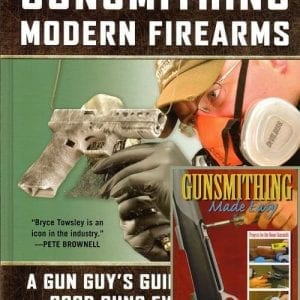
At 13 years old I was pleased to shoot this doe. Why not? I bought that Remington Model 788 rifle by working on a farm baling hay all summer. With the help of my grandfather I handloaded the ammo for that .243 Winchester. It was about a lot more than just inches of antlers back then. You can probably tell, it was the first deer I gutted by myself!
I am a lucky man. Due to my chosen profession as a hunting and gun writer (and a lot of hard work) I have been able to hunt most of the world. As a whitetail nut, I think I have hunted them in just about every good place they live and a few not so good.
I live in a place that is in the last category. In fact, Vermont may well be in contention for one of the worst places to hunt whitetail deer.
It wasn’t always that way; we once had what was described as the densest per square mile population of whitetails ever recorded on earth. But then the hippies who now run this place decided to take over land management. The farms are all but gone and most of the forest is mature and is terrible habitat. Our winter yards are grown up to uselessness. Couple that with high hunter pressure, and it’s hard for a deer to make a living here.
But it’s home for me and I try to hunt here at least a few days every season. This year I had a lot more time than that. Due to some poorly thought out management changes with one of the bigger outdoor products companies, their PR director left after 19 years of loyal service. He and I had planned to hunt the Texas Panhandle this week, but that hunt left with him and I found myself with 14 days of Vermont’s 16 day season open for me to hunt.
So naturally, I ended it all in 12 minutes. That’s how long I sat at the base of the hemlock tree after official shooting time started before I pulled the trigger. I spent most of it with a buck standing just five yards behind me.
I am deaf as hell, but I heard him grunt behind me, which is not where I expected to see a deer. Then a few minutes later I could hear him walking in the dry leaves, too damn close. He came within 5 yards of me and I am shocked he didn’t see me, as I was on the ground. He was behind me and I am sure he saw me start to pick up my gun as he stopped, and stared at me for a very long time. I just froze. I could see him out of the corner of my eye, but had no idea if he was a buck, doe or Bigfoot. I just knew that something big was behind me and very close.
Then he walked out where I could shoot him. I had to get that noisy M-70 safety off and swing both me and the gun around, as he was on my right. Then I had to wait for him to turn enough so I could get a shot at something other than his ass. No way I should have gotten that deer, except there was a doe on the hill above him and I guess he had tunnel vision. Thank God for the stupidity that the prospect of getting laid induces.
 Most hunters will scoff at him for being small, but he is a trophy in Vermont. This farm gets hunted very hard and if he is not the best deer taken there in the past decade, he is in the top two. But I’ll tell you something else, if he had been a fork horn or any other legal buck I still would have shot him and been happy
Most hunters will scoff at him for being small, but he is a trophy in Vermont. This farm gets hunted very hard and if he is not the best deer taken there in the past decade, he is in the top two. But I’ll tell you something else, if he had been a fork horn or any other legal buck I still would have shot him and been happy
It’s a matter of perspective.
I believe that it’s harder to get any legal buck here than it is to get a huge trophy in most places. In fact, I have always maintained that it’s harder to shoot a legal buck on public land in many places than it is to shoot a big trophy buck in those locations often featured in magazines and on TV. If you can find success year after year on hard hunted public land, then you are a very accomplished hunter and every bit as skilled as the guys shooting big deer in the high profile locations.
 I have hunted all those places and I have been lucky enough to shoot some very good whitetail bucks. But I keep things in perspective. For me it’s about going hunting and accepting the challenge of hunting for what it is. I am probably more proud of this eight point than some of the trophy bucks I have taken in some of the glamor areas. Not to detract from them; I am very proud of them as well, but again it’s a perspective thing.
I have hunted all those places and I have been lucky enough to shoot some very good whitetail bucks. But I keep things in perspective. For me it’s about going hunting and accepting the challenge of hunting for what it is. I am probably more proud of this eight point than some of the trophy bucks I have taken in some of the glamor areas. Not to detract from them; I am very proud of them as well, but again it’s a perspective thing.
 I have friends who will no longer hunt in Vermont because they won’t shoot a big trophy buck here. I find that a little foolish. Isn’t it better to be hunting than not hunting? At times I think this “trophy mentality” is getting out of hand. When I see kids in their first year of hunting holding out for a “150” I think that perhaps they are missing the true reasons for hunting. When I hear some loudmouth at the check station talking crap about a medium size deer another hunter shot it’s hard to hold my tongue. How did hunting whitetails become so focused on the size of the antlers? Sure we all want big deer, but should that be the sole focus? Why not hunt for the love of hunting? Why not be happy with a deer that makes you happy?
I have friends who will no longer hunt in Vermont because they won’t shoot a big trophy buck here. I find that a little foolish. Isn’t it better to be hunting than not hunting? At times I think this “trophy mentality” is getting out of hand. When I see kids in their first year of hunting holding out for a “150” I think that perhaps they are missing the true reasons for hunting. When I hear some loudmouth at the check station talking crap about a medium size deer another hunter shot it’s hard to hold my tongue. How did hunting whitetails become so focused on the size of the antlers? Sure we all want big deer, but should that be the sole focus? Why not hunt for the love of hunting? Why not be happy with a deer that makes you happy?

Traditions and family are important to hunting. My father had a photo of me sitting on a forkhorn buck he shot when I was just five months old. I continued the tradition here with my daughter Erin thirty one years later.
Most public land deer are every bit as educated as and probably even smarter than those big deer we see hunters shooting on TV or in magazines. Those hunters have trophies they can be proud of, but that doesn’t mean we shouldn’t be proud of the legal deer we shoot in places that are tougher to hunt. They might not have antlers as big, but we worked just as hard and overcame as many, or even more, obstacles before we put a tag on the deer. It’s about the hunt, not the inches. Remember that and never apologize for a deer you earned fair and square.
Like I said, it’s all a matter of perspective and I truly think that a lot of American deer hunters have lost that perspective. Let’s celebrate hunting, not the number of inches the buck grew.









